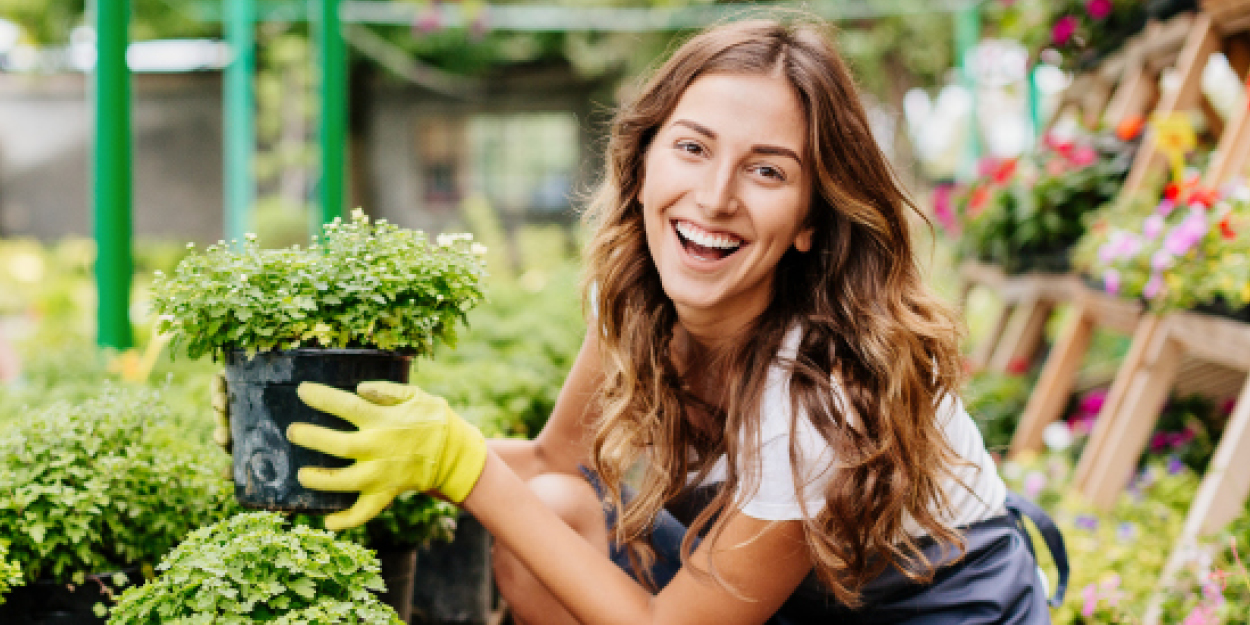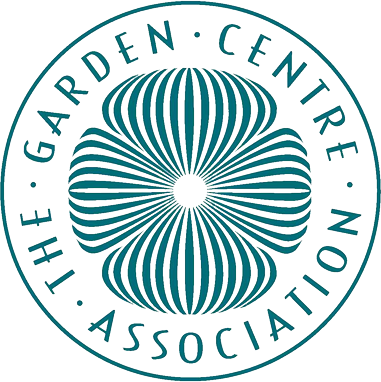Guide For Successful Container Planting
Practical
Container grown plants are very often seen as the practical solution to the problem of having little or no gardening space. While it is very certainly true that containers are the way to go for those living in flats or other dwellings without a garden, there’s also so much gardening potential in container growing that open to quite literally anyone.
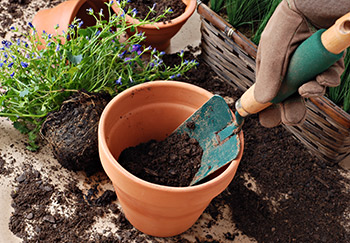
Moveable
When using containers, for example, your plants are no longer restricted to a specific spot and can be moved around to change the overall effect (or whenever new plants are added to the arrangement). In fact, this is perhaps one of the very best things about container growing, as well as the reason why – even if you have the space for a conventional garden – you should give it a go; container arrangements can endow an otherwise spare patio space with fine floral ornament and enliven the grey block of a balcony with overspilling plant life.

Fashionable
And then there’s the containers themselves! Containers come in, quite literally, all shapes and sizes. From pots to tubs, trays, hanging baskets and even ornamental vases, there’s a plenty to choose from, and many sizes and designs available for each type. With container gardening, these become part of the visual appeal, complementing and playing off the plants that they hold. The gorgeous effect of overspilling million bells, for example, can only work if they have a hanging basket or flowerpot to spill over!
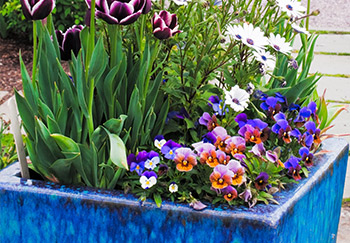
Cookable
And all of this is not to mention the culinary dimension. Herbs, fruit and vegetables alike are frequently grown in containers and pots. Whether spread around the kitchen or placed on windowsills, these plants provide the kitchen with a ready supply of cooking ingredients that simply could not be fresher. They look great, smell great and wait eagerly for being plucked and added to the next recipe that requires them.

Potential
So with all this potential that comes with container growing, there’s obviously quite a bit to consider when deciding what you would like to grow, in what container you would like to grow it and how you’d like to arrange those containers around your garden, patio, balcony or home to create the effect that you desire. Read on then, as we outline the rudiments of container growing, offering up some handy tips along the way.
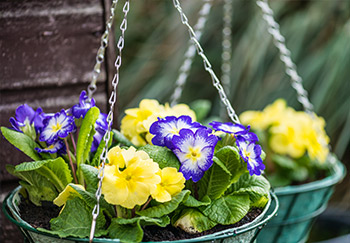
Choosing Your Containers
A good thing to remember is that, in pretty much all cases, it’s easier to grow plants in larger containers. This is simply because the larger amount of soil retains moisture easier, as well as being less prone to drying out or suffering sudden temperature fluctuations. That said, don’t let size be an obstacle – with a little extra care even drought prone hanging baskets can be maintained in the middle of summer.

Repotting
Generally speaking, you’ll want to regularly repot rapidly growing plants. These are those which spread their roots out as they grow. As long as you do this before they form a rootball (where the roots have taken up the full area of a pot’s soil) you won’t have to worry about this too much. To check, simply penetrate a little into the soil near the rim of the pot with a fork. If you encounter any roots (which will be easy enough to feel) it’s time to pull up your plant, knock away some of the excess soil and replant into a larger pot.
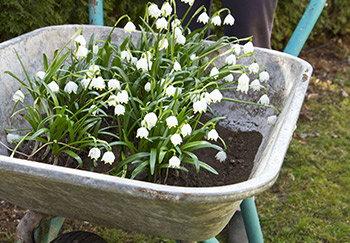
Aesthetics
In terms of colour, aesthetic effect will probably be your primary criteria, and why not? It’s all about the effect you want to create with in the space you’re working with, so pick what you like! That said, lighter coloured pots will reflect sunlight and therefore keep your plants cooler in the summer, but there’s no need for this to become a deciding factor. Go with what strikes your eye as pleasing, taking full advantage of the several containers out there which feature pleasant ornamentation – they really can be a thing of beauty, and there’s so much to choose from!

Materials
The materials which containers and pots are made from can vary, but most common are certainly the reddish terracotta pots and the plastic imitations thereof. These type of pots have several advantages. For one thing, they’re heavy and often large enough to come in any size you’ll need and, while some may be in danger of cracking with frost, many have protections against this. Keep in mind, however, that these pots are porous and, in hot summer months, can cause your soil to dry out fairly quickly. That said, this is nothing which some diligent watering can’t fix. Plastic pots are great for retaining moisture but don’t protect terribly well against winter frosts and may need wrapping in some protective material.
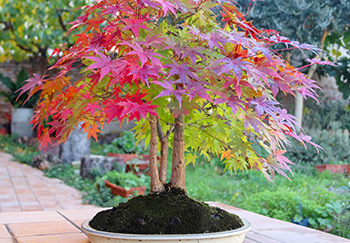
Varieties
There are also several less common options such as cast concrete and glazed containers which have their own benefits and can certainly look great with certain plants. Cast concrete containers exude a stately, almost austere, look and can be left outside in all weathers. They’re great if you wish to avoid the pitfalls of other materials, however they won’t be of use if you’ll need to repot a growing plant and they can be a little difficult to move around. Glazed pots can look wonderfully ornamental and especially suit certain plants such as Japanese maples.
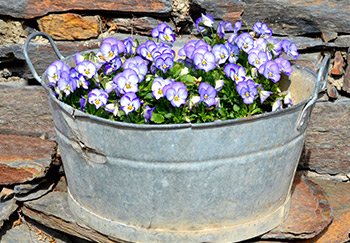
Drainage
Drainage is pretty much essential for anything you’ll want to grow, in any container. Drainage holes prevent the soil becoming waterlogged. If you come across a container without drainage holes, you can drill some yourself or use the container as a cache pot. A cache pot encloses smaller pots and is handy as it can provide the appearance of a larger ornamental pot and enclose a more practical smaller pot for your plant to actually grow in. You can then move them separately.
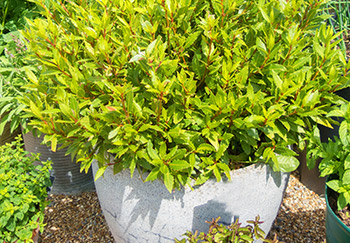
Arrangement
When arranging your assorted containers, big and small, in your garden or growing space, you might wish to follow the memorably dubbed “thriller, spiller, filler” rule. This means having a centrepiece plant (the thriller) which is typically larger and with impressive blooms or foliage, several plants designed to spill over the edge of your pots (“spillers”) which arrange nicely around your centrepiece and then plenty of so called “filler” plants which bloom all season long and really fill out the display. This is a tried and tested method and can serve as a means of anchoring your style in something recognisable. But of course, it’s up to you to work with the space that you have.
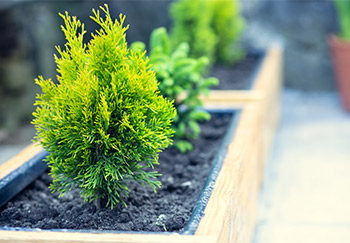
When to Plant Your Containers
When you put your plants into your containers depends very much on what you’re planting. As a general rule, keep it in mind that plants take a little bit of time to properly settle into their new homes (much like anyone does!). Placed into a new soil, time will be required for the roots to properly set in before your plant will burst forth in full bloom.
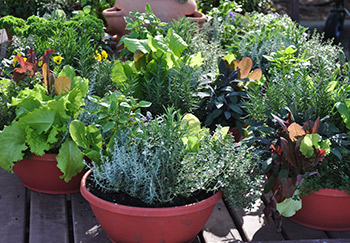
Hardy and Seasonal
If you’re planting permanent specimens – that is to say, those grown by themselves for ornamental effect and not mixed in a bed with others – you’ll want to get these into their containers in early spring, as these establish rapidly. Your more tender plants destined to bloom in summer and intolerant of any cold should be, naturally enough, planted out in May after the threat of frost has fully abated. There are some beautiful plants which can be grown in containers and placed outside in winter – think of sedums, carex and winter pansies – and, naturally enough, you’ll want to plant these in late summer or early autumn.

How to Plant Your Containers
With container gardening, it could be said that hardest part is selecting your plants, containers and locations – i.e. all of the fun stuff. When it comes to actually creating what you’ve worked long and hard to plan out, you’ll find that with a few simple rules and principles, this doesn’t offer much challenge at all.

Container and Compost Preparation
One of the great benefits of container growing is that what you can grow is no longer beholden to the type of soil conditions you have inherited with your garden. With containers, you always have the opportunity of preparing the optimal compost for your plants. As a general rule, use peat-free compost (usually sold as “multipurpose”) for short term plants and a soil-based compost for permanent plantings. You can also add additional fertiliser to help your plants grow or, to improve draining, water retaining water retaining granules.
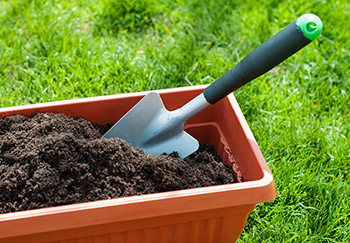
Location
To prepare your containers, first of all decide where they will be located and move them there before you add the soil – a container full of moist compost can be mightily heavy! You’ll also want to ensure you have adequate draining holes and, if they’re particularly large, you’ll want to prevent the soil washing out by adding a layer of pot shards, gravel or newspaper.
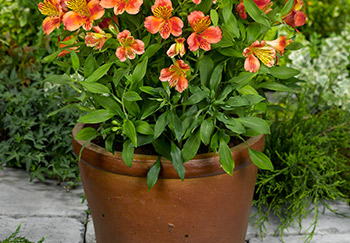
Choosing What to Plant
What to plant? Well, the choice here really is infinite. Almost any plant, be it flower, tree, shrub, herb vegetable or fruit, can be successfully grown in a container. Generally speaking, however, you’ll want to plant out the smaller – or “Dwarf” – cultivars for whatever plant you intend to grow, as these are best suited to container growing. As well as employing the “thriller, spiller, filler” rule (see above) it’s also a good idea to include a good mix of habits (trailing and upright) as well as flowers, shrubs and small trees. Considerations about sunlight are also important, so make sure plants which require more sunlight are not dominated by shade.

Crop
In terms of vegetables and herbs, you might wish to grow these within easy reach of your kitchen (windowsills are a popular choice). For larger vegetable plants such as tomato, broccoli or cabbage, you might also find yourself using individual pots – pumpkins and squash are another two vegetables which suit this approach well.

The Possibilities of Container Gardening
Be it for appearance or taste, container growing throws the door wide open on a range of opportunities and is perhaps the one form of gardening that truly is for everybody, regardless of their property or the space they’re working with. Coordinated well and grown at the right time, there really is no limit to what you can create with this most flexible and adaptable style of gardening.
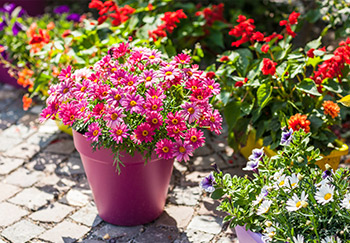
Useful Links
- How to Plant an Autumn Container Garden (Video)
- How To Plant & Maintain Your Containers (Article)
- Create the Perfect Container (Article)
- How To Create an Outdoor Planted Container (Video)
- Create Sensational Containers (Video)




